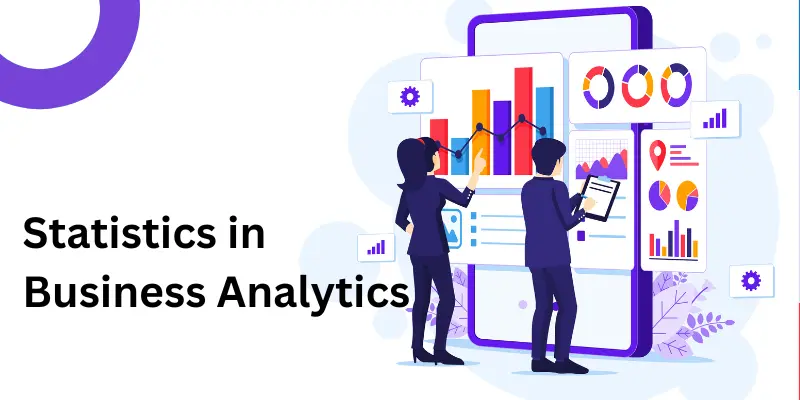In today’s continuously changing business market, making data-driven choices is critical to preserving a competitive advantage. Business analytics has developed as a vital tool for firms that want to use their data to boost performance and growth. At the heart of business analytics lies statistical analysis, a method that allows businesses to make sense of complex data sets. This blog will explore why statistical analysis is essential in business analytics and how it can benefit organizations, particularly for students and professionals in MBA Business Analytics Colleges.
Understanding Statistics in Business Analytics
The Role of Statistics in Business Analytics
Statistics play a foundational role in business analytics. By applying statistical methods, businesses can transform raw data into meaningful insights. These insights help organizations understand trends, identify patterns, and make informed decisions. Statistics in business analytics involve collecting, analyzing, and interpreting data to make strategic decisions that enhance business performance. From forecasting sales to optimizing operations, statistical analysis provides the tools to extract valuable information from data.
Essential Statistical Techniques for Business Analytics
Several statistical techniques are commonly used in business analytics. Descriptive statistics summarize data sets, providing a clear overview of what the data shows. Inferential statistics, on the other hand, allow businesses to make predictions and generalizations about a population based on a sample. Regression analysis, hypothesis testing, and time series analysis are integral to statistics for business analytics. These methods enable businesses to uncover relationships between variables, test hypotheses, and forecast future trends.
Benefits of Statistical Analysis in Business Analytics
Enhanced Decision-Making
One of the main advantages of utilizing statistics in business analytics is improved decision-making. Businesses can base their decisions on empirical evidence rather than intuition or guesswork by relying on statistical analysis. This approach minimizes risk and increases the likelihood of successful outcomes. For instance, a company might use regression analysis to determine the factors most significantly impact sales, allowing them to focus their resources on the most effective strategies.
Identifying Trends and Patterns
Statistical analysis helps businesses identify trends and patterns that might not be immediately apparent. Analyzing historical data allows businesses to recognize recurring patterns and predict future occurrences. This capability is precious in inventory management, where understanding demand patterns can lead to more efficient stock control. Statistics business analytics tools can also help detect anomalies or outliers, which might indicate underlying issues that need addressing. Students can significantly enhance their career prospects by mastering these skills for Management Colleges Near Me.
Optimizing Business Processes
Statistics for business analytics are essential for process optimization. By analyzing performance data, businesses can identify bottlenecks, inefficiencies, and areas for improvement. For example, a manufacturing company might use statistical process control to monitor production quality and reduce defects. Similarly, a retail business might analyze transaction data to streamline checkout and enhance customer satisfaction. Statistical analysis provides the insights needed to refine operations and boost overall efficiency.
Predictive Analytics
Predictive analytics is a powerful application of statistics in business analytics. Businesses can forecast future events and trends by building predictive models based on historical data. This foresight enables proactive decision-making and strategic planning. For instance, predictive analytics can help a financial institution anticipate loan defaults and adjust their lending criteria accordingly. Predictive models may help marketers determine which clients react to an effort, allowing for more focused and realistic marketing efforts. Understanding predictive analytics is critical for students pursuing an MBA Business Analytics in Chennai.
Statistical analysis is a cornerstone of business analytics, providing the tools and techniques needed to transform data into actionable insights. By leveraging statistics in business analytics, organizations can enhance decision-making, identify trends and patterns, optimize processes, and employ predictive analytics to stay ahead of the competition. As the corporate environment grows more data-driven, the importance of statistical analysis will only continue to grow. Whether you are just starting with business analytics or looking to deepen your expertise, understanding the role of statistics is essential for harnessing the full potential of your data.
